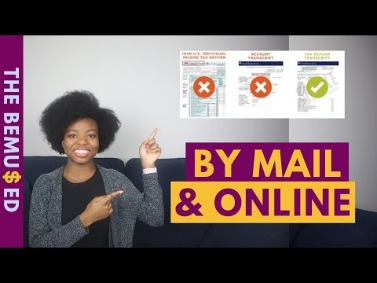The difference between liability and debt

Current liabilities include things like payroll, invoices and utility bills, such as the cost to keep the electricity running in the building. Most current liabilities are payable, and you’ll find that the majority of liabilities in the balance sheet tend to be current liabilities. Sometimes, depending on the way in which employers pay their employees, salaries and wages may be considered short-term debt. Record your business’s liabilities on your small business balance sheet. The balance sheet is a financial statement that shows your assets, liabilities, and equity. The balance sheet reveals a snapshot of your finances that compares what your business owns to what it owes.
Simply put, the higher the debt to equity ratio, the greater the concern about company liquidity. Liabilities are a vital part of a company’s financial picture. Like most consumers, businesses don’t necessarily pay for everything with cash on hand.
Key differences between Debt and Liability
For the particular year where the installment and the interest charge is supposed to be repaid, the part of the debt is classified as a Current Liability. The remaining portion of the debt, which is due after a period of 12 months, is still categorized as Non-Current Liability. Depending on the agreement between the debt holder and the bank, repayment of the debt can vary from situation to situation. However, generally, the debt is repaid in the form of installments and an interest charge every year. Fixed assets can also be turned into cash, but the process of converting them takes more time. In some cases, a fixed asset might lose value if you try to convert it to cash too soon or too quickly.
For example, the loan that results from financing a company car is a liability. Liabilities are located on a company’s balance sheet, along with assets and equity. The balance sheet is one of three financial statements that a company should have, and it is a reflection of the company’s overall financial health and net worth. For more information on balance sheets, read our article on what a healthy balance sheet looks like. If a company owes quarterly taxes that have yet to be paid, it could be considered a short-term liability and be categorized as short-term debt.
Debtry store
Long-term liabilities are also called noncurrent liabilities. You pay long-term liabilities over a period that is longer than one year. In small business accounting, liabilities are existing debts that your business owes to another business, organization, vendor, employee, or government agency.
United Therapeutics (NASDAQ:UTHR) Has A Rock Solid Balance Sheet – Simply Wall St
United Therapeutics (NASDAQ:UTHR) Has A Rock Solid Balance Sheet.
Posted: Mon, 04 Sep 2023 14:17:16 GMT [source]
A creditor might ask to review your balance sheet to determine the level of risk involved in working with you. The higher your liabilities, the bigger risk you are to the creditor. Let’s say that the fictional ABC Construction Company was looking to expand its business, so it took out a loan for $50,000 to purchase a new piece of equipment. Sure, the machine itself is a company asset, but the money owed to the lender is a liability. When ABC Construction Company goes to create its quarterly balance sheet, it would include the $50,000 owed to the lender for the loan taken out to purchase the equipment. The flip side of liabilities is assets — resources the company uses to generate income.
With liabilities, you don’t have to pay immediately after you receive a good or service. Liabilities are a core part of accounting roles and many other careers in finance. The easiest way to show you understand them is by discussing skills you have in areas of accounting and finance that involve liabilities. Liability is a past event that is likely to result in a cash outflow in near future from a business.
What is the Difference Between Assets and Liabilities?
Accounting processes often involve examining the relationships between liabilities, assets, and equity and how these things affect a business’s profitability and performance. Liabilities for a business may be long-term loans for funding operations, money a company owes to vendors or suppliers, and leases on warehouse space. If a company has an obligation to pay someone or for something, the 12 branches of accounting: their uses and how they work it is a liability. Like businesses, an individual’s or household’s net worth is taken by balancing assets against liabilities. For most households, liabilities will include taxes due, bills that must be paid, rent or mortgage payments, loan interest and principal due, and so on. If you are pre-paid for performing work or a service, the work owed may also be construed as a liability.
In chapter 3, we contrasted
operating and capital leases and noted that operating leases are treated as
operating expenses rather than financing expenses. A retail firms leases a store space for 12 years and
enters into a lease agreement with the owner of the space agreeing to pay a
fixed amount each year for that period. We do not see much difference between
this commitment and borrowing money from a bank and agreeing to pay off the
bank loan over 12 years in equal annual installments.
What is Accounts Receivable Collection Period? (Definition, Formula, and Example)
The first, and often the most common, type of short-term debt is a company’s short-term bank loans. These types of loans arise on a business’s balance sheet when the company needs quick financing in order to fund working capital needs. It’s also known as a « bank plug, » because a short-term loan is often used to fill a gap between longer financing options. Accountants also need a strong understanding of how these debts and obligations function within an organization’s finances.
- This indicator must be greater than one since below it means that the company is not able to meet its working capital debts with the liquidity that it is capable of generating.
- The equation to calculate net income is revenues minus expenses.
- The
answer to this question may seem obvious since the balance sheet for a firm
shows the outstanding liabilities of a firm. - It is reasonable, and even necessary at times, to resort to external capital to boost activity, but always with good planning.
- If we choose to use net
debt ratios, we have to be consistent all the way through the valuation.
If we choose to use net
debt ratios, we have to be consistent all the way through the valuation. To
begin, the beta for the firm should be estimated using a net debt ratio rather
than a gross debt ratio. The cost of equity that emerges from the beta estimate
can be used to estimate a cost of capital, but the market value weight on debt
should be based upon net debt. Once we discount the cash flows of the firm at
the cost of capital, we should not add back cash. Instead, we should subtract
the net debt outstanding to arrive at the estimated value of equity.
It is mostly long-term in nature, but this amount is representative of something that is owned by the company. For example, assets include Current Assets and Non-Current Assets, and within those categories, there are several different varieties of assets that are included in the balance sheet. Negative net worth doesn’t necessarily mean you’re living paycheck to paycheck, as this number doesn’t include your income — only how much money you’ve saved and invested. Nevertheless, it could mean you need to examine your financial habits and consider whether you’re making fiscally responsible decisions. Although a liability sounds like something that would always be financially unideal since it takes money out of your pocket, that’s not always the case.
Qiagen (NYSE:QGEN) Seems To Use Debt Quite Sensibly – Simply Wall St
Qiagen (NYSE:QGEN) Seems To Use Debt Quite Sensibly.
Posted: Mon, 04 Sep 2023 10:09:51 GMT [source]
Liabilities are incurred in order to fund the ongoing activities of a business. Examples of liability accounts are trade payables, accrued expenses payable, and wages payable. Current Liabilities mainly include the payments that the company has to make over the period of 1 year.
What is a Liability?
Although liabilities may seem like expenses, there is in fact a difference between them. Another common type of short-term debt is a company’s accounts payable. This liabilities account is used to track all outstanding payments due to outside vendors and stakeholders. If a company purchases a piece of machinery for $10,000 on short-term credit, to be paid within 30 days, the $10,000 is categorized among accounts payable. The value of the short-term debt account is very important when determining a company’s performance.
